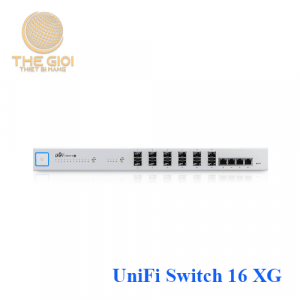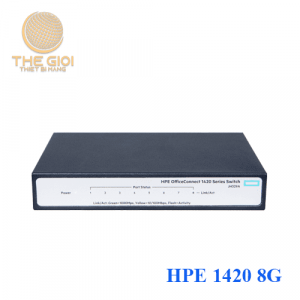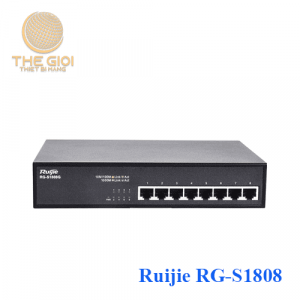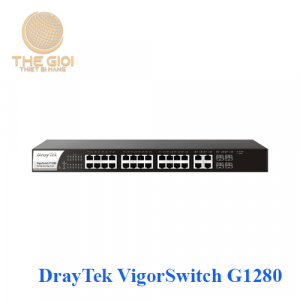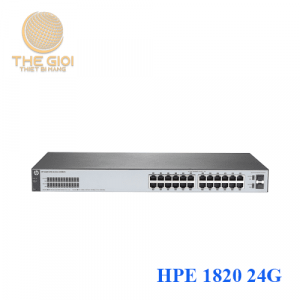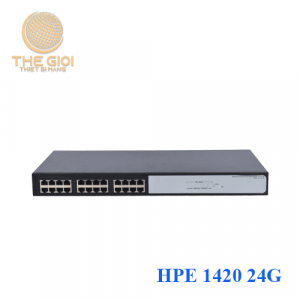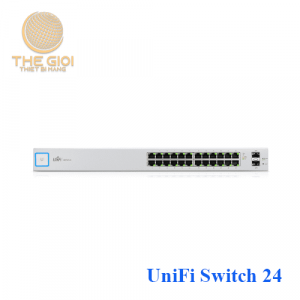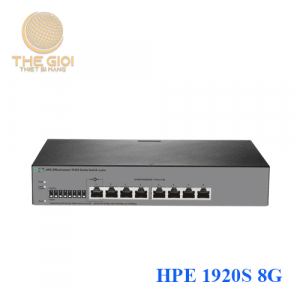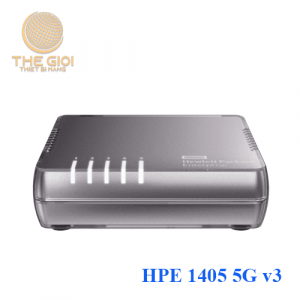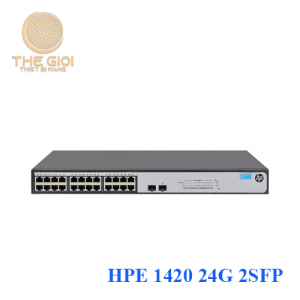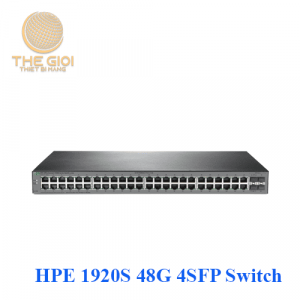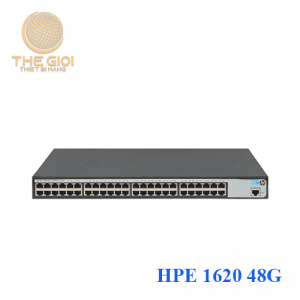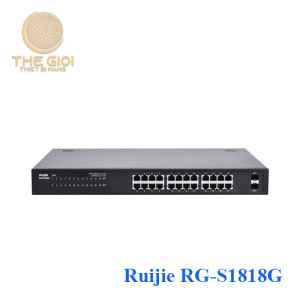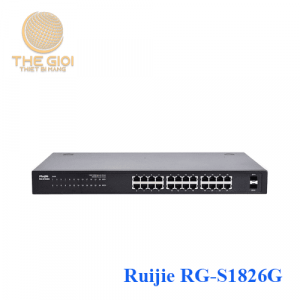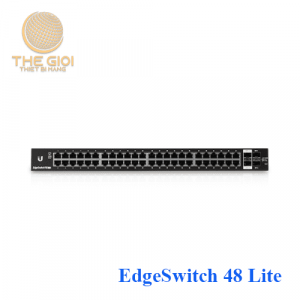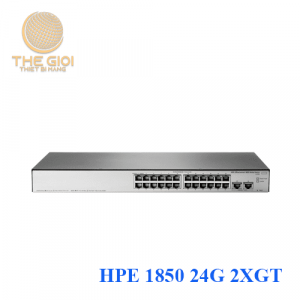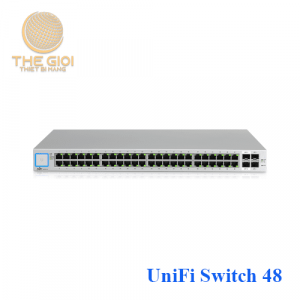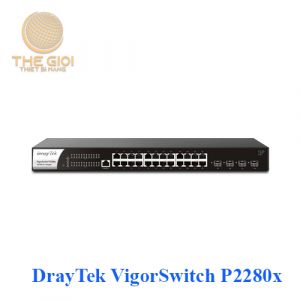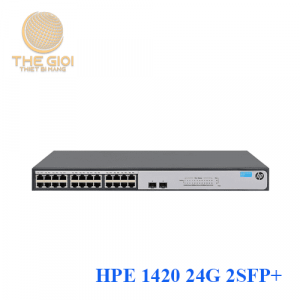Cisco SF350-48 48-port 10/100 Managed Switch
Thiết bị chuyển mạch mạng Switch Cisco SF350-48-K9-EU dòng sản phẩm nổi bật trong phân khúc Switch Cisco 350 Series là sự lựa chọn, giải pháp quản lý và bảo mật thích hợp với các doanh nghiệp vừa và nhỏ hiện nay.
Cisco SF350-48-K9-EU cung cấp bộ các tính năng cải thiện tính khả dụng của các ứng dụng kinh doanh quan trọng và bảo vệ thông tin nhạy cảm tối ưu hóa băng thông mạng giúp cung cấp thông tin hiệu quả hơn.
Bộ chuyển mạch Switch Cisco SF350-48-K9-EU được thiết kế với 48Port RJ45 trên đường truyền băng thông tốc độ 10/100Mbps. Cùng với đó là 2 x 10/100/1000 cổng, 2 x kết hợp quảng cáo mini-GBIC trong tháng: Gói – Smartnet.
Cisco SF350-48-K9-EU có kích thước chiều rộng 17,3 in, chiều sâu 10.1 in và chiều cao 1,8 in với mức cân nặng 7,87 lbs là loại lắp rack vô cùng tiện lợi trong việc sử dụng.
Đặc trưng của dòng Switch Cisco SF350-48-K9-EU chính hãng
– Ứng dụng mạng thông minh của Cisco (SNA) là một công cụ quản lý và giám sát cấp mạng cải tiến được nhúng trong các thiết bị chuyển mạch Cisco 100 đến 500 Series. Nó có thể khám phá cấu trúc liên kết mạng, hiển thị trạng thái liên kết, theo dõi sự kiện, áp dụng cấu hình và nâng cấp hình ảnh phần mềm trên nhiều thiết bị chuyển mạch trong mạng.
– Trình quản lý và dò tìm mạng FindIT được thiết kế để quản lý các thiết bị chuyển mạch, bộ định tuyến và điểm truy cập không dây Cisco 100 đến 500 Series. Trình quản lý cho phép bạn chủ động quản lý mạng thay vì chỉ phản ứng với các sự kiện. FindIT Network Management là sự bổ sung hoàn hảo cho mạng doanh nghiệp của bạn.
– Tiện ích Discovery Network của Cisco FindIT hoạt động thông qua một thanh công cụ đơn giản trên trình duyệt web của bạn để khám phá các thiết bị Cisco trên mạng và hiển thị thông tin thiết bị cơ bản, kiểm kê và cập nhật firmware mới để hỗ trợ cấu hình và tăng tốc việc triển khai các sản phẩm của Cisco Small Business.
– Cổng USB ở mặt trước của công tắc cho phép truyền hình ảnh và cấu hình dễ dàng để triển khai hoặc nâng cấp nhanh hơn.
– Giao diện đồ họa đơn giản sử dụng làm giảm thời gian cần thiết để triển khai, khắc phục sự cố và quản lý mạng và cho phép bạn hỗ trợ các khả năng tinh vi mà không làm tăng số lượng đầu CNTT.
– Các công tắc cũng hỗ trợ Textview, một tùy chọn Giao diện dòng lệnh đầy đủ (CLI) cho các đối tác thích nó.
– Sử dụng thông minh Auto Smartports, công tắc có thể phát hiện thiết bị mạng được kết nối với bất kỳ cổng nào và tự động định cấu hình bảo mật tối ưu, Chất lượng dịch vụ (QoS) và tính khả dụng trên cổng đó.
– Cisco Discovery Protocol phát hiện ra các thiết bị Cisco và cho phép các thiết bị chia sẻ thông tin cấu hình quan trọng, đơn giản hóa việc thiết lập và tích hợp mạng.
– Hỗ trợ Giao thức quản lý mạng đơn giản (SNMP) cho phép bạn thiết lập và quản lý các thiết bị chuyển mạch và các thiết bị Cisco khác từ xa từ một trạm quản lý mạng, cải thiện quy trình làm việc CNTT và cấu hình khối lượng.
Thông số kỹ thuật sản phẩm Switch Cisco SF350-48-K9-EU
Đặc tính kỹ thuật
| Model | SF350-48-K9-EU |
| Performance | |
| Switching capacity and forwarding rate | Capacity in Millions of Packets per Second (mpps) (64-byte packets): 13.09 |
| All switches are wire speed and nonblocking | Switching Capacity in Gigabits per Second (Gbps): 17.6 |
| USB slot | For file-management purposes |
| Layer 2 Switching | |
| Spanning Tree Protocol | Standard 802.1d Spanning Tree support Fast convergence using 802.1w (Rapid Spanning Tree [RSTP]), enabled by default 8 instances are supported Multiple Spanning Tree instances using 802.1s (MSTP) |
| Port grouping | Support for IEEE 802.3ad Link Aggregation Control Protocol (LACP): Up to 8 groups, Up to 8 ports per group with 16 candidate ports for each (dynamic) 802.3ad link aggregation |
| VLAN | Support for up to 4096 VLANs simultaneously Port-based and 802.1Q tag-based VLANs MAC-based VLAN Management VLAN Private VLAN Edge (PVE), also known as protected ports, with multiple uplinks Guest VLAN Unauthenticated VLAN Dynamic VLAN assignment via RADIUS server along with 802.1x client authentication CPE VLAN |
| Voice VLAN | Voice traffic is automatically assigned to a voice-specific VLAN and treated with appropriate levels of QoS Auto voice capabilities deliver networkwide zero-touch deployment of voice endpoints and call control devices |
| Multicast TV VLAN | Multicast TV VLAN allows the single multicast VLAN to be shared in the network while subscribers remain in separate VLANs (also known as MVR) |
| Q-in-Q VLAN | VLANs transparently cross a service provider network while isolating traffic among customers |
| Generic VLAN Registration Protocol (GVRP)/Generic Attribute Registration Protocol (GARP) | Protocols for automatically propagating and configuring VLANs in a bridged domain |
| Unidirectional Link Detection (UDLD) | UDLD monitors physical connection to detect unidirectional links caused by incorrect wiring or cable/port faults to prevent forwarding loops and blackholing of traffic in switched networks |
| Dynamic Host Configuration Protocol (DHCP) Relay at Layer 2 | Relay of DHCP traffic to DHCP server in different VLAN; works with DHCP Option 82 |
| Internet Group Management Protocol (IGMP) versions 1, 2, and 3 snooping | IGMP limits bandwidth-intensive multicast traffic to only the requesters; supports 1K multicast groups (source-specific multicasting is also supported) |
| IGMP Querier | IGMP querier is used to support a Layer 2 multicast domain of snooping switches in the absence of a multicast router |
| Head-Of-Line (HOL) blocking | HOL blocking prevention |
| Loopback Detection | Loopback detection provides protection against loops by transmitting loop protocol packets out of ports on which loop protection has been enabled. It operates independently of STP |
| Jumbo frames | Up to 9K (9216) bytes |
| Layer 3 | |
| IPv4 routing | Wirespeed routing of IPv4 packets Up to 1K static routes and up to 128 IP interfaces |
| IPv6 routing | Wirespeed routing of IPv6 packets |
| Classless Interdomain Routing (CIDR) | Support for CIDR |
| Layer 3 Interface | Configuration of Layer 3 interface on physical port, LAG, VLAN interface, or loopback interface |
| DHCP relay at Layer 3 | Relay of DHCP traffic across IP domains |
| User Datagram Protocol (UDP) relay | Relay of broadcast information across Layer 3 domains for application discovery or relaying of bootP/DHCP packets |
| DHCP Server | Switch functions as an IPv4 DHCP server serving IP addresses for multiple DHCP pools/scopes Support for DHCP options |
| Security | |
| Secure Shell (SSH) Protocol | SSH is a secure replacement for Telnet traffic. SCP also uses SSH. SSH v1 and v2 are supported |
| Secure Sockets Layer (SSL) | SSL support: Encrypts all HTTPS traffic, allowing highly secure access to the browser-based management GUI in the switch |
| IEEE 802.1X (Authenticator role) | 802.1X: RADIUS authentication and accounting, MD5 hash; guest VLAN; unauthenticated VLAN, single/multiple host mode and single/multiple sessions Supports time-based 802.1X Dynamic VLAN assignment |
| Web-based authentication | Web based authentication provides network admission control through web browser to any host devices and operating systems |
| STP Bridge Protocol Data Unit (BPDU) Guard | A security mechanism to protect the network from invalid configurations. A port enabled for BPDU Guard is shut down if a BPDU message is received on that port |
| STP Root Guard | This prevents edge devices not in the network administrator’s control from becoming Spanning Tree Protocol root nodes |
| DHCP snooping | Filters out DHCP messages with unregistered IP addresses and/or from unexpected or untrusted interfaces. This prevents rogue devices from behaving as DHCP Servers |
| IP Source Guard (IPSG) | When IP Source Guard is enabled at a port, the switch filters out IP packets received from the port if the source IP addresses of the packets have not been statically configured or dynamically learned from DHCP snooping. This prevents IP Address Spoofing |
| Dynamic ARP Inspection (DAI) | The switch discards ARP packets from a port if there are no static or dynamic IP/MAC bindings or if there is a discrepancy between the source or destination addresses in the ARP packet. This prevents man-in-the-middle attacks |
| IP/MAC/Port Binding (IPMB) | The preceding features (DHCP Snooping, IP Source Guard, and Dynamic ARP Inspection) work together to prevent DOS attacks in the network, thereby increasing network availability |
| Secure Core Technology (SCT) | Makes sure that the switch will receive and process management and protocol traffic no matter how much traffic is received |
| Secure Sensitive Data (SSD) | A mechanism to manage sensitive data (such as passwords, keys, and so on) securely on the switch, populating this data to other devices, and secure autoconfig. Access to view the sensitive data as plaintext or encrypted is provided according to the user-configured access level and the access method of the user |
| Layer 2 isolation Private VLAN Edge (PVE) with community VLAN | PVE (also known as protected ports) provides Layer 2 isolation between devices in the same VLAN, supports multiple uplinks |
| Port security | The ability to lock source MAC addresses to ports and limits the number of learned MAC addresses |
| RADIUS/TACACS+ | Supports RADIUS and TACACS authentication. Switch functions as a client |
| Storm control | Broadcast, multicast, and unknown unicast |
| RADIUS accounting | The RADIUS accounting functions allow data to be sent at the start and end of services, indicating the amount of resources (such as time, packets, bytes, and so on) used during the session |
| DoS prevention | Denial-Of-Service (DOS) attack prevention |
| ACLs | Support for up to 512 rules Drop or rate limit based on source and destination MAC, VLAN ID or IP address, protocol, port, Differentiated Services Code Point (DSCP)/IP precedence, TCP/UDP source and destination ports, 802.1p priority, Ethernet type, Internet Control Message Protocol (ICMP) packets, IGMP packets, TCP flag, time-based ACLs supported |
| Quality of Service | |
| Priority levels | 8 hardware queues |
| Scheduling | Strict priority and Weighted Round-Robin (WRR) Queue assignment based on DSCP and class of service (802.1p/CoS) |
| Class of service | Port based; 802.1p VLAN priority based; IPv4/v6 IP precedence/Type of Service (ToS)/DSCP based; Differentiated Services (DiffServ); classification and remarking ACLs, trusted QoS |
| Rate limiting | Ingress policer; egress shaping and rate control; per VLAN, per port, and flow based |
| Congestion avoidance | A TCP congestion avoidance algorithm is required to minimize and prevent global TCP loss synchronization |
| General | |
| Jumbo frames | Frame sizes up to 9K (9216) bytes supported on 10/100 and Gigabit interfaces |
| MAC table | Up to 16K (16384) MAC addresses |
| Environmental | |
| Dimensions | 440 x 44 x 257 mm |
| Weight | 3.58 kg |
| Power | 100-240V 50-60 Hz, internal, universal |


